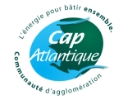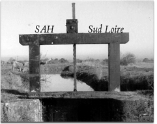Biology / ecology
The Sea wormwood (Artemisia maritima) is a plant species of the asteraceae family (such as thistle, dandelion, sunflower, ….).
This perennial, whitish plant, covered with a light down, sometimes reaching thirty centimeters flowers in September-October.
The Sea wormwood is characteristic of the coastal marshes and, without being a plant of salt meadows strictly speaking, it can be integrated into the floristic procession of the high schorre in connection with the sea purslane.
However, it does not tolerate immersion in seawater so that it is often just above the highest water level.
Protection and conservation status
The Sea wormwood is protected in Pays-de-la-Loire.
Its conservation status is considered to be of minor concern at the national level and vulnerable at the regional level.
Despite its relatively unfavorable conservation status due to its only coastal distribution, and its high heritage value, the Sea wormwood is not included in the Flora and Wildlife Habitats Directive.
Distribution and status of populations on Natura 2000 sites
The distribution of the Sea wormwood is relatively localized in the northern part of the marshes of Ile de Noirmoutier, on the marsh of Vie and is limited to a few stations of Guérande and Pouliguen. The population status appears to be stable.
Conservation objectives / threats / actions planned in LIFE
The main factor for the conservation of the Sea wormwood is the maintenance of the banks according to the principle of old edges and the conservation of the maximum water level reached at high tide.
The work of cleaning up the hydraulic network, consolidating the banks and maintaining the edges must respect the bank vegetation. Information for companies, maintenance services and salt workers / salt workers is necessary in the sectors where the species is present.
The management of water levels by lock keepers on the main networks and by operators on secondary systems or marshes plays an essential role in its conservation.
The guide to good practice planned for 2023 as part of the LIFE Sallina program will take up the specific recommendations for the conservation of the species.













